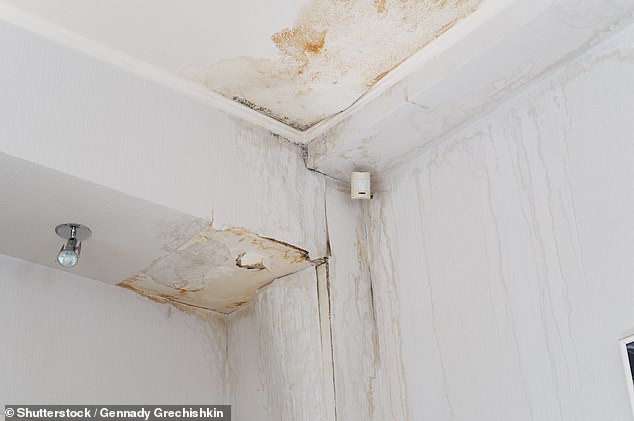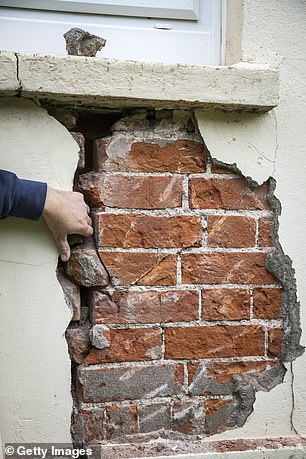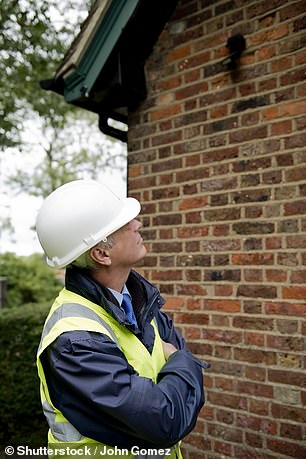Which research should you choose when buying a house?
Caveat emptor – ‘let the buyer beware’ – is a phrase that couldn’t be more relevant when buying property.
Once you’ve made a purchase, the last thing you want is to discover that your beautiful new home is hiding nightmares behind every nook and cranny.
After you’ve spent your savings on the deposit, legal fees, mortgage costs and furnishings, you don’t want to spend more on repair bills that could possibly have been avoided.
Most qualified surveyors are members of the Royal Institute of Chartered Surveyors (RICS).
After an offer on a property has been accepted, buyers have the opportunity to organize an independent investigation before exchanging contracts.
It’s not a legal requirement, but if it isn’t they may not be aware of all kinds of costly problems – rising damp, subsidence, a leaking roof, wood rot and asbestos, to name a few.
A surveyor’s job is to inspect the condition of the property so that the buyer can be aware of any problems.
What are the different types of research?
To make life a little more complicated, there are several types of surveys to choose from.
If you buy with a mortgage, the lender will carry out a valuation of the property itself.
This is only to assess whether the property fits the credit criteria and that the amount paid represents market value.
‘Any potential buyer should be advised that the mortgage valuation will not be sufficient to protect their interests,’ says Grant Barnes, managing director at Barnes and Barnes Chartered Surveyors.
‘This is because it is an appraisal and not an investigation. It is tailored to the bank’s lending criteria and may have been provided by a surveyor who simply looked online or carried out a drive-by inspection, without entering the property.”
According to the real estate advisory service, the Homeowners Alliance, there are different levels of scrutiny.
The cheapest and easiest survey you can get is a cstands reportwhich typically costs £300 or more.
“It provides a summary of the property’s defects, including potential risks affecting the home, but does not include advice or appraisal,” says Paula Higgins, founder of the Homeowners Alliance.
The next level up is a Hreport bribesthe most popular survey among buyers according to the Royal Institute of Chartered Surveyors.
This will typically cost £400 or more depending on the size of the property, and can include both a survey and a valuation if necessary.
“This survey is not intrusive, so a surveyor will not look behind furniture, lift floorboards or drill holes, so their report is limited,” says Higgins.
The most comprehensive research a buyer can choose to do is a bconstruction surveyalso known as a Sstructural research.
The price of a building survey typically ranges from £500 to £2,000 depending on the size of the house, according to the Homeowners Alliance.
“The surveyor goes into the attic, looks behind walls and looks between floors and above ceilings,” says Higgins.
‘This survey includes advice on repairs, with estimated timing and costs, and tells you what will happen if you don’t make the repairs.’
What about new-build homes?
In new-build homes it is unlikely that problems such as damp or subsidence will occur, but it may still be worthwhile to have an investigation carried out.
Higgins recommends that buyers hire a professional Snagging survey to carry out – this usually costs between £300 and £600.
“A stalled investigation will reveal flaws or problems that need to be addressed before you move in,” says Higgins.
‘It should detect minor problems, such as a door that is misaligned and catching on the carpet, to something more serious that could affect the structure of your home.’

A leaky roof can come with an expensive repair bill, so you may want to renegotiate the purchase price
Which research should you choose?
The choice of survey will largely depend on the property in question.
“Listed properties or properties of non-traditional construction are best suited for the more detailed, full structural investigation,” says Barnes.
‘It may also be wise to opt for a more extensive investigation if a building has been structurally changed in any way, for example if it has undergone a roof conversion or extension.
‘Every property is different, but your surveyor should be able to advise you on the most appropriate survey for your requirements, based on the age and condition of the property and whether it has been structurally altered.’
What dangers can lurk in a house?
There are thousands of different problems that can arise in a property – and not just within old Victorian houses or conversions.
Weathered or cracked brickwork, leaking drains, old wiring, poor plumbing, woodworm, wet or dry rot and lead pipes are all problems that a surveyor may need to bring to your attention.

A surveyor will draw your attention to any defects that may need to be repaired after you have moved.
“Structural movement is a key issue we need to pay attention to,” says James Perris, surveyor at De Villiers. ‘This could be due to failing foundations or historical changes such as renovations or the removal of walls.
‘Moisture is a common problem, caused by ingress of rain or groundwater or defective pipes.
‘The failure of roof tiles or roof frames, due to age or changes, is another problem that regularly comes up.’
Asbestos can potentially be found in any home built or renovated before the year 2000, because it was used in almost every building for most of the 20th century, Perris warns.
It can be in the lining of pipes, vinyl floors, in the textured coating on ceilings or walls or in the insulation of attics.
Asbestos is not dangerous unless it is disturbed. So if you are planning to renovate the property after you have moved in, it is wise to have this checked as removing asbestos can be a very expensive process.
“The worst problems tend to be those that affect the stability or marketability of the property, which in turn affects its value,” says Barnes.
‘For example, if a historic house is in constant motion, caused by nearby vegetation causing shrinkage of the clay subsoil, it is unlikely to be considered suitable for bank lending.
‘Other potential problems can arise if a property is located in an area considered to be at risk of flooding, making it difficult to insure.’
A good surveyor will likely raise issues outside the property itself, according to Barnes.
These include the rights of way that a neighbor might have over your land; road agreements; liability for drains or sewers and any nearby planning or highway proposals.
“A surveyor should look at the house and its surroundings, including access issues, shared liabilities, nearby trees, power or electricity substations and cell phone towers,” says Barnes.

A good surveyor should spot problems outside the property, as well as within its walls
What should you do if a surveyor finds problems?
If a surveyor identifies matters that require attention, it may be wise to have a specialist conduct further investigation.
For example, an asbestos survey, a fire risk assessment or a damp and timber assessment will give a buyer a clearer picture.
Ultimately, the buyer will find themselves in a position where they must investigate further, renegotiate, or walk away.
“Whether a buyer chooses to abandon or renegotiate a purchase depends on their tolerance for completing the repair work,” Perris says.
“If a buyer wants to renegotiate, I recommend they get a cost estimate to show to the seller’s agent.
‘Being open about the problems and showing evidence of the likely repair costs will help negotiations and avoid the idea that the buyer is just trying.’
Some links in this article may be affiliate links. If you click on it, we may earn a small commission. That helps us fund This Is Money and keep it free to use. We do not write articles to promote products. We do not allow a commercial relationship to compromise our editorial independence.

